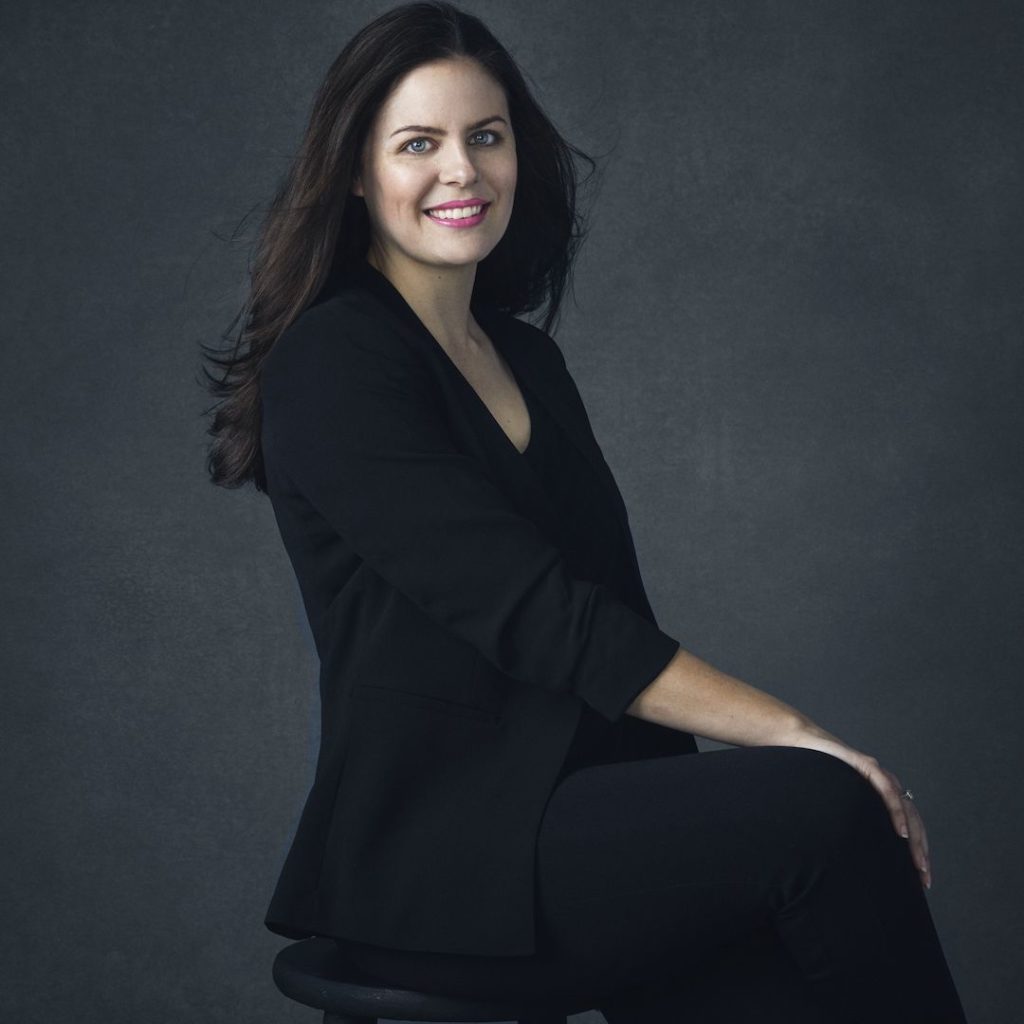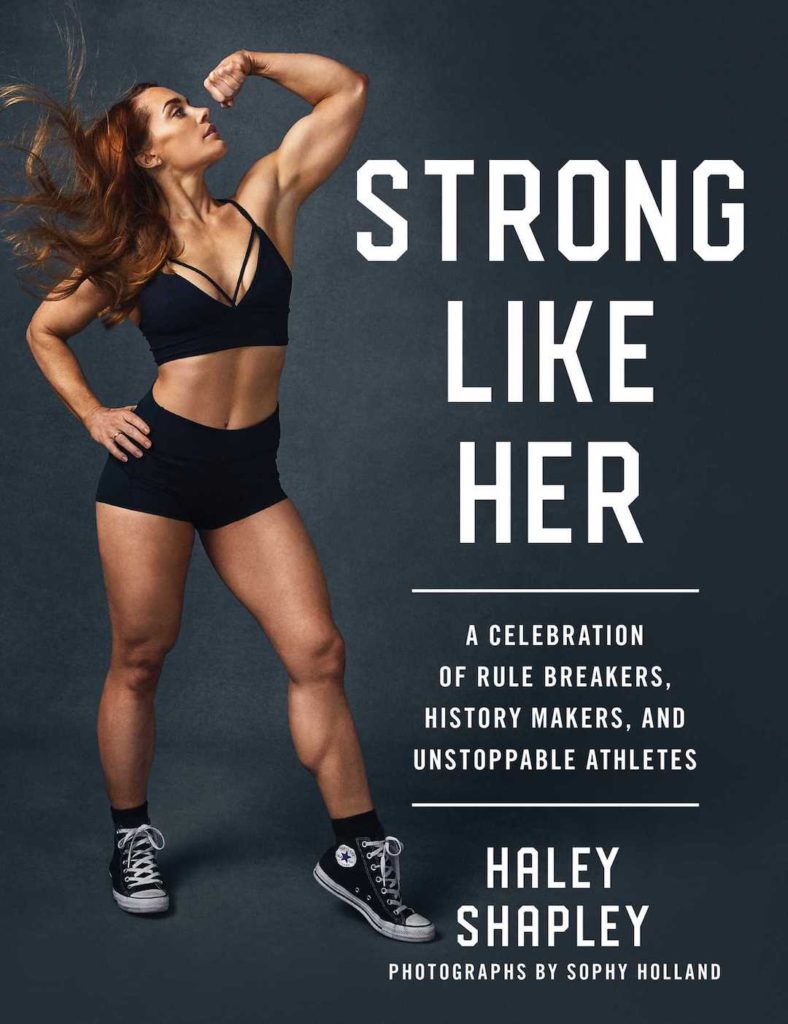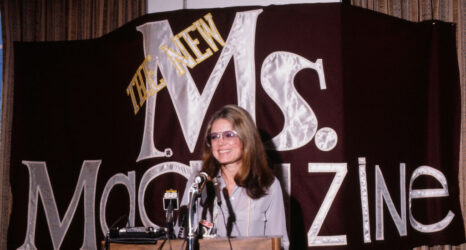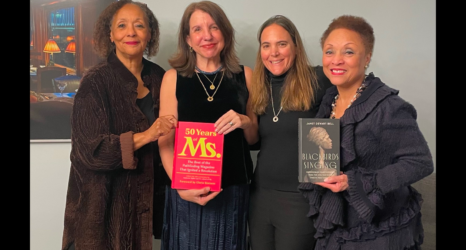Part group biography and part cultural history anthology, Strong Like Her: A Celebration of Rule Breakers, History Makers, and Unstoppable Athletes, a new book by journalist Haley Shapley, celebrates untold stories of women who have broken barriers, challenged stereotypes and shattered athletic glass ceilings. An expert in this topic, Shapley has herself cycled 206 miles from Seattle to Portland, summited the highest glaciated peak in the continental U.S., competed in a bodybuilding show and run a marathon—and now she’s written a book that will leave readers feeling inspired and powerful. She spoke to Ms. about her new book, the women athletes that have inspired her and the power of a woman embracing her own strength.

Where did the idea for Strong Like Her come from?
Haley Shapley: I grew up playing sports, but when I was younger, I never really focused on wanting to be stronger — honestly, I always wanted to be smaller. I started lifting heavy weights about five years ago, and I noticed that my beliefs about my body’s capabilities — and the way I viewed it — were rapidly changing. It was after I started training for a bodybuilding show that I got the idea for the book. I heard a range of reactions, from “Wow, that’s so cool” to “Don’t get too big; men don’t like that.” Through both traditional and social media, I was seeing so many women who were pushing their athletic potential, and yet it was clear that as a society we still had a lot of opinions about what kind of activities were appropriate for women. I wanted to explore the idea of how we’ve gotten to a point where muscle is admired in women — at least to some extent.
In your introduction, you explore a bit of the history of how the concept of frailty became linked to femininity, and subsequently masculinity with muscularity. Would you tell Ms. readers a bit about the history of these stereotypes?
HS: This concept has been around in various cultures for a long time, but I think a lot of our ideas about femininity and masculinity in the United States can be traced back to the 1800s, when the prevailing notion was that men and women had separate spheres of influence. There was a movement during this time period known as muscular Christianity, which spawned the YMCA and drew a connection between manhood, religion, muscularity, and virtue. Because men and women were viewed as opposites, the more popular it was for men to be strong, the more popular it was for women to be frail. This created a dichotomy that exaggerated differences between the sexes that maybe weren’t so big to begin with.
You also wrote about the ways in which—throughout history—women breaking barriers of physical strength were often tied up in the fight for feminist social reform.
HS: One timely example, given that 2020 is the 100th anniversary of the 19th Amendment being ratified, is the role circus stars played in women getting the right to vote. In the 1800s and early 1900s, the traveling circus was incredibly popular in a way that’s difficult to imagine today — in an age before television, people were hungry for entertainment, so when the circus came to town, everyone showed up. (Think of it like today’s “Tiger King“; for a period of time, it was all anyone talked about.) This gave the female performers more influence than they might have otherwise had, and many equestrians and acrobats used that influence to campaign for suffrage. Opponents commonly argued that only people who could physically defend the country should be allowed to vote, i.e. men. Performers like strongwoman Sandwina, who could lift three men at a time and bend iron bars, put to rest the notion that women weren’t capable.

Your book introduces readers to so many amazing athletes and their inspiring stories. Who are some athletes who inspire you?
HS: I’m inspired by so many athletes, it’s hard to choose! I interviewed Kathrine Switzer for this book, the first woman to run the Boston Marathon as an official participant, and I find her story incredibly inspirational. When she signed up for the race in 1967, she didn’t set out to be a trailblazer or expect to stir up controversy; she was shocked when a race official tried to pull her off the course. A series of photos of that happening became famous the world over. It would have been easy to shrink away, and she momentarily considered dropping out, but she pushed on and completed the 26.2 miles, a difficult feat even without the drama surrounding it. Kathrine went on to become a competitive marathoner who was instrumental in getting longer-distance races added to the docket for female runners, including the marathon in the 1984 Olympics. Today, she’s the founder of a nonprofit called 261 Fearless that uses running as a way to empower and unite women around the world.
For current athletes, I’m in awe of Misty Copeland. Not only for the way she can dance, which is incredible, but for how she’s redefined the image of a ballerina. She’s faced a lot of criticism for being muscular and not having the stereotypical ballet body, and she’s never handled it with anything but grace and poise.
You write about how you played sports throughout your childhood, but that you didn’t spend much time thinking about your own strength. If you could, would you give your younger self any advice?
HS: After I went through puberty, I spent a lot of time worried about my thighs — they were just bigger than the thighs of most of the girls around me. One of the women I feature in Strong Like Her, freerunner Sydney Olson, felt the same way when she was younger. I love what she said about it in my discussions with her: “Over time, I found out my legs are what give me my power.” Sydney can perform amazing flips and tricks thanks to her legs, and I can deadlift and squat and do all kinds of cool things. So I’d tell my younger self that what you see as a flaw might just be one of your biggest strengths.
Anything else you’d like Ms. readers to know about Strong Like Her?
HS: I’ve been getting so much feedback from readers who aren’t in the strength-training world who have been surprised by just how engrossing these stories are of women and their impact on society. There are some feisty personalities in these pages! And definitely a few things that will make you shake your head. If you love to bench press and flip tires, then you’ll love the book, but if those things don’t sound fun to you, I think you’ll still find the journey through history to be an interesting and enlightening one that just might give you a new way of looking at strength.





